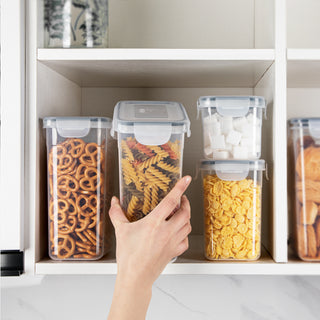In today's fast-paced world, the convenience of food storage cannot be overstated. Whether you're meal prepping for the week, saving leftovers, or packing a picnic, the material of your food containers plays a crucial role in keeping your food fresh and safe. With a myriad of options available, choosing the right material for your food storage needs can be overwhelming. This guide aims to shed light on the best food container materials, helping you make an informed decision.
Glass: The Clear Winner for Durability and Safety
Glass containers are a classic choice for food storage and for good reason. They are non-porous, which means they don't absorb flavors or odors. This feature makes them perfect for storing a wide variety of foods, from sauces to salads, without the worry of residual tastes or smells. Glass is also incredibly durable and can last for years if handled carefully. It's microwave-safe, dishwasher-safe, and doesn't degrade over time, making it a sustainable choice for eco-conscious consumers. However, glass's major downside is its weight and fragility, which can be a concern for on-the-go meals.
Stainless Steel: The Lightweight Champion
Stainless steel containers offer an unbeatable combination of durability and lightness. They're practically indestructible, making them an excellent choice for lunches or snacks on the go. Stainless steel is also non-reactive, which means it won't leach chemicals into your food, ensuring a safer eating experience. Its sleek appearance and ease of cleaning (hello, dishwasher friendliness!) make it a favorite among many. However, it's not microwave-safe, and its inability to be see-through means you can't easily identify what's inside without opening the lid.
Plastic: The Convenient Contender
Plastic containers are the most common and convenient option for food storage. They're lightweight, affordable, and come in a myriad of shapes and sizes. Many plastic containers are also microwave and dishwasher safe, making them incredibly user-friendly. However, not all plastics are created equal. It's essential to choose containers that are BPA-free to avoid potential health risks associated with this chemical. Additionally, plastic can stain and absorb odors over time, which might affect its longevity and the taste of your food.
Silicone: The Flexible Innovator
Silicone is a relatively new player in the food container game but has quickly become popular due to its unique properties. Silicone containers are flexible, making them easy to store in tight spaces. They're also microwave, dishwasher, and freezer safe, offering a versatile solution for all your food storage needs. Silicone doesn't absorb odors or flavors and is resistant to staining. While it's a great material for food storage, it can be more expensive than plastic and not as widely available.
Choosing the Right Material for You
Selecting the best food container material depends on your specific needs:
- For Home Use: Glass containers might be the best choice due to their durability and safety.
- For Travel and Lunches: Stainless steel or high-quality plastic containers offer lightweight and convenient options.
- For Versatility: Silicone containers provide an innovative solution for those who value flexibility and ease of use.
In conclusion, each material offers unique benefits for food storage. Whether you prioritize durability, safety, convenience, or sustainability, there's a food container material that's right for you. Investing in quality containers of the right material can enhance your food storage experience, keeping your meals fresh and delicious day after day.

